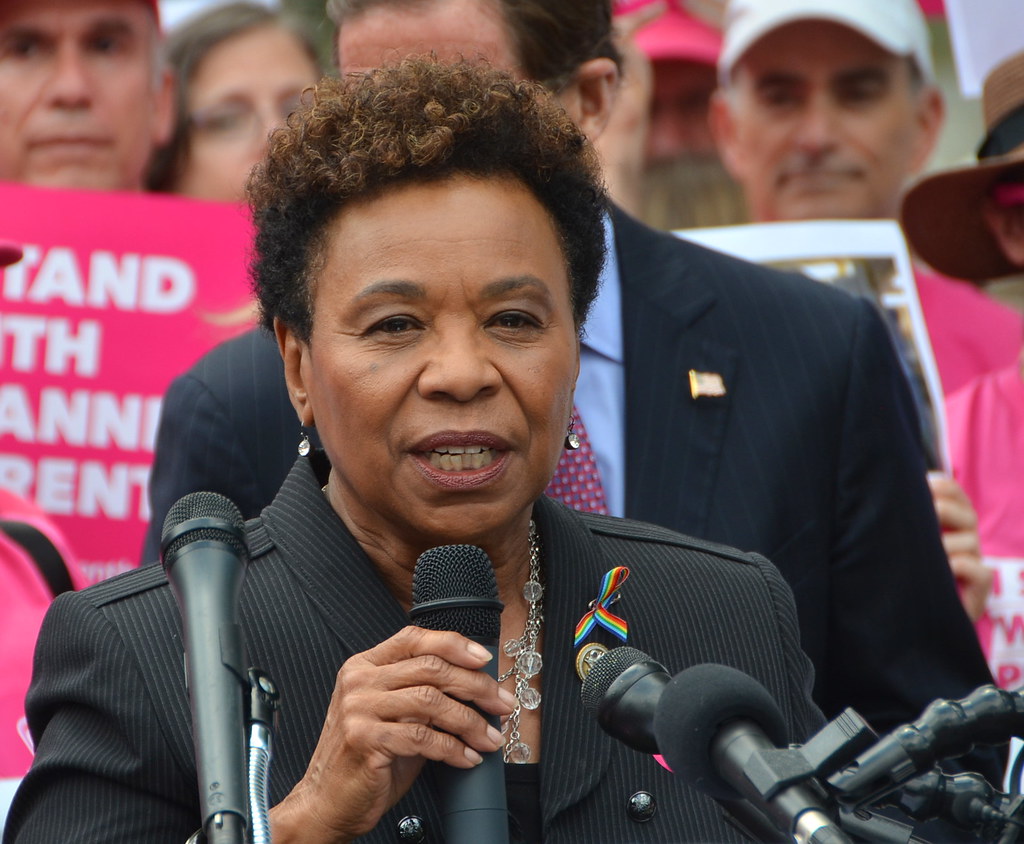California Senate hopeful Barbara Lee wants $50 per hour minimum wage, raising costs and reducing employment.
by J.D. Tuccille
Minimum wage advocates are often asked why, if they think prosperity can be achieved by setting a floor on what people are allowed to charge for their labor, they don’t just hike it until everybody is wealthy?
Unsurprisingly for California and the year 2024, the spotlight was on bad ideas.
More Prosperity by Law
“Porter and Lee both support a $20 to $25 an hour minimum wage,” according to Clara Harter of the Los Angeles Daily News. “Lee, who is pitching herself as the most progressive candidate in the race, has said that she would consider $50 per hour a living wage in the Bay Area, which she represents.”
Lee based her argument on a 2021 study by United Way that claimed that one in three California earn less than the “real cost measure” of living in the state based on neighborhood demographic analysis and what the organization called “household dignity budgets.”
In San Francisco, “a family of four would need to make $127,332 each year just to meet basic needs,” SFGate reported at the time. For context, Lee’s $50 wage, multiplied by 40 hours per week and 52 weeks each year comes in at $104,000.
United Way’s methodology for arriving at a “poverty measure that points the way to a decent standard of living” is more than a bit squishy, but California cities are notoriously expensive. Still, waving a magic policy wand and mandating that employers pay everybody “a living wage” based on fond wishes isn’t going to make everybody able to afford the state’s costs. It might put them out of work instead.
Higher Costs and Fewer Jobs
Just before the new year, Pizza Hut announced “it would lay off about 1,200 delivery drivers in Los Angeles, Orange, and Riverside counties,” Reason‘s Eric Boehm noted. The layoffs were planned to take effect “just weeks before the new, higher minimum wage hits” in California, hiking wages to $20 per hour. Remaining workers might get higher pay (assuming their hours remain the same—a big “if”), but fewer people will be employed.
The cost of buying meals is expected to rise, too, as restaurants adjust to California’s new wage law.
“Minimum wage for California fast-food workers is set to rise to $20 an hour in April, a 25% increase from the state’s broader $16 minimum wage,” The Wall Street Journal‘s Heather Haddon wrote earlier this month. “Restaurants including McDonald’s, Chipotle, Jack in the Box and others say they will raise menu prices in California in response, with some McDonald’s franchisees estimating hundreds of thousands of dollars per restaurant in added labor costs.”
Higher price tags are likely to reduce demand for fast food as people make their own meals or turn to other alternatives. That’s what happened when Seattle mandated higher compensation for food delivery drivers, driving up the cost of meals and giving would-be diners second thoughts.
“Assuming that you are working constantly, then yes, you’re going to be making that much money,” Mia Shagen, a driver, told King5 News earlier this month. “But that’s not what’s happening right now. Because people are not ordering as much anymore.”
Economists Know Better
It’s no surprise that higher labor prices raise costs and reduce the demand for labor. In 2021, the Congressional Budget Office researched the impact of a proposal to raise the federal minimum wage to $15 an hour from (still current) $7.25.
“The number of people in poverty would be reduced by 0.9 million,” the study predicted. But “employment would be reduced by 1.4 million workers.”
Government officials can dictate a price, but they can’t make it worth people’s while to pay that price. That’s why most economists oppose minimum wages. A 2015 survey of economists found “nearly three-quarters of these US-based economists oppose a federal minimum wage of $15.00 per hour.” The survey also reported a “majority of surveyed economists believe a $15.00 per hour minimum wage will have negative effects on youth employment levels (83%), adult employment levels (52%), and the number of jobs available (76%).”
“So what are the effects of increasing minimum wages?,” economist Paul Krugman wrote in 1998. “Any Econ 101 student can tell you the answer: The higher wage reduces the quantity of labor demanded, and hence leads to unemployment.”
Having morphed since then into a political columnist, Krugman now endorses government-set prices for labor. He insists “the market for labor isn’t like the market for, say, wheat, because workers are people.” But he explicitly mocked that argument a quarter-century ago, writing: “Clearly these advocates very much want to believe that the price of labor—unlike that of gasoline, or Manhattan apartments—can be set based on considerations of justice, not supply and demand, without unpleasant side effects.”
Pundits like the modern version of Krugman and politicians like Barbara Lee might want prices for labor to be different than other prices, but economic laws remain in the way. People’s labor is worth what others are willing to pay and artificially hiking the price by decree means fewer jobs and reduced income for many real people who were falsely promised benefits from the law.
“Government-mandated minimum wages are always arbitrary and almost never based on any sound economic/cost-benefit analysis,” economist Mark Perry wrote for the American Enterprise Institute in response to the eternal debate over this issue. “Why $10.10 an hour…and not $9.10 or $11.10 an hour? Why $15 an hour and not $14 or $16 an hour or $25 an hour?”
Like many politicians, Barbara Lee must have heard some version of that question. Her response is to raise the ante to $50 per hour in a bid for votes. But hiking the price people are allowed to charge for their labor always pays off in higher costs, lost jobs, and less prosperity for those on the receiving end.
Originally published by the Reason Foundation. Republished with permission.
For more Budget & Tax News.
